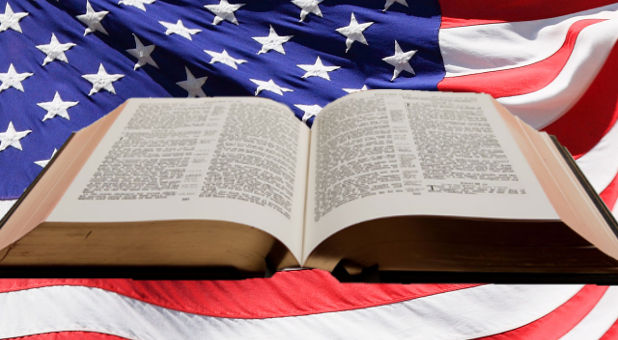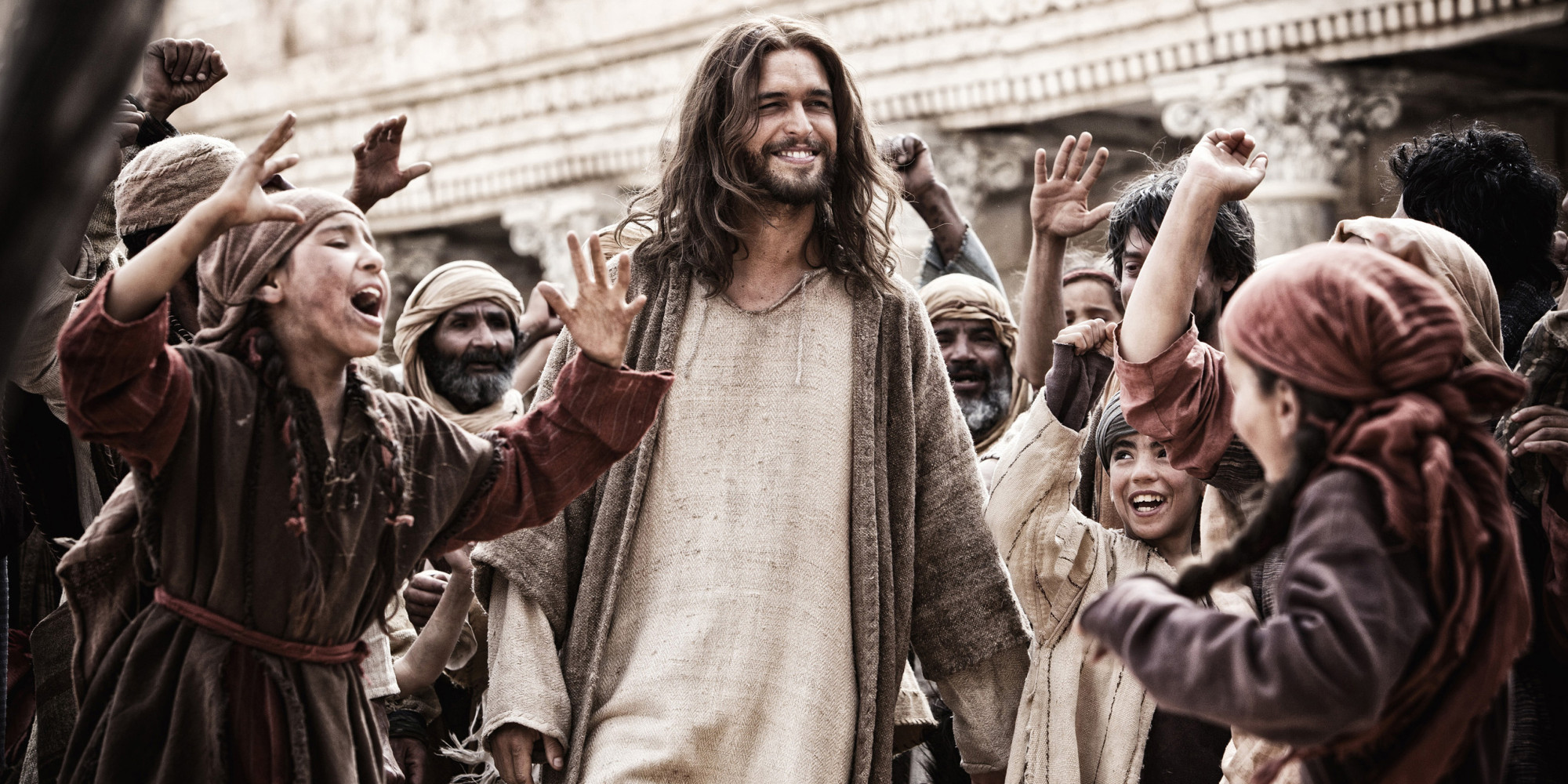The Church is the Body of Christ
A. The Basic Reality: Christ Is The Head of the Body
1. Angels seated on a great stone, just jolted from its track, announced the new era. Gesturing toward the empty tomb, they proclaimed, “He is not here, he has risen (Matthew 28:6). This Jesus men put to death could not be held by the grave. The power of God exploded in the battered corpse and Jesus Christ was raised from the dead.
2. Paul affirms the extent of Jesus’ power -Ephesians 1:15-23. The thrust of Paul’s argument is clear.
a. Jesus lives!
b. Jesus possesses ultimate power!
c. Jesus, God’s gift to us, has been appointed head over everything to us!
Note: Outline of Ephesians 1:15-23
(1) New-Life Power v. 15-19.
(2) Extent of Power v. 20-22a.
(3) Beneficiaries of Power v. 22b-23.
3. Three Models of Leadership
a. Command: Over/under concept found in the Old Test-agent and in
contemporary business relations. Emphasis is on authority and control (Decision Making).
b. Sharing: Side-by-side concept. Emphasis is on sharing and sustenance. Stress is on relation rather than role.
c. Servant: Under concept, in order to support life. Stress in on “gave himself” (Ephesians 5).
4. Read Ephesians 1:22; 4:15; 5:21-33; Colossians 1:18; 2:10, 19.
a. Jesus’ headship is relational not positional.
b. Jesus’ functions as head are powerful.
(1) He is the source and origin of life.
(2) He sustains the whole body and supplies all we need for growth.
(3) He is committed to serve us and brings saving transformation to our personalities.
(4) He stoops to lift us up and presents us without blemish before His Father.
B. KEY TO SELF-UNDERSTANDING: WE ARE A LIVING ORGANISM 1 Cor. 12: 12-31; Ephesians 4:7-16.
1. There is a big difference between “is like” and “is.” Resemblance is not identity. The Bible does not say that the church “resembles” the body. It insists that the church is the body of Christ. Since we are dealing with identity and not mere resemblance, we are not free to note parallels and then ignore their practical implications.
2. The Reality of the Body: Affirmed in two great passages.
a. 1 Corinthians 12:12-31 (Be Sure And Read It). Four things are stressed here.
(1) The wholeness of the Body v.12-13.
(2) The arrangement of the members v.14-20.
(3) The freedom of the members v.21-26.
(4) The gifts of the members v.27-31 b.
b. Ephesians 4:7-16. Three things need to be noticed.
(1) The gifts of the body v.7-11.
(2) The special functions of the gifted v.12-13
(3) The great result to the body v.14-16. 3. Juan Carlos Ortiz’s Comparison.
a. A “Church Member.”
(1) Must attend meetings.
(2) Must give money.
(3) Must live morally.
(4) Should recruit new members.
(5) Should participate in planned projects.
b. “Body-Type Member.”
(1) Dependent on other members.
(2) Unites two other members.
(3) Passes nourishment to other members.
(4) Passes orders along to other members.
(5) Stays put.
(6) Is elastic – adaptable.
C. JESUS IS INCARNATE IN HIS BODY – THE CHURCH.
1. The church is the body of Christ (Ephesians 1 :22-23). Christ is living his life again in us (Galatians 2:20; Philippians 1:21). We, the church, continue the incarnation.
a. Likeness: Luke 6:40; Romans 8:29; 2 Cor. 3:18.
b. Word written on flesh: Jere. 31:31; 2 Cor. 3:3.
c. Reflection of his glory: Matt. 5:14; John 13:34-35.
d. A new, loving walk: 1 John 1:6-7; Ephesians 5:1-2.
e. A new creation: Colossians 3:3, 9-10, 12-14.
NOTE: The church gathered focuses on internal life and growth. The church scattered focuses on continuing the mission of Christ.
2. The greatest wonder of all–
a. In us -Jesus Himself walks the earth.
b. In us -Jesus speaks the good news.
c. In us -Jesus clothes the fatherless and feeds the orphans.
d. In us -Jesus exalts the Father in praise and worship.
e. In us -Jesus continue to do good works.
f. In us -Jesus brings hope to the hopeless.
g. In us -Jesus exposes the darkness of sin by a positive, attractive holiness.
h. In us -Jesus continues to show God’s deep concern for justice.
i. In us -Jesus manifests his healing touch wherever there is division and pain.
j. In us -Jesus takes a firm stand against evil.
k. In us -Jesus touches the leper and sinner again.
l. In us -Jesus takes contemporary shape and form.
3. The Implications of the Incarnation -Realization of power.
a. It brings an awareness of the supernatural in our lives.
(1) Read slowly and carefully Psalms 93:1-2. This Lord is Head of the church.
(2) Then, look carefully at Colossians 1:15-18. This Lord is Head of the church.
(3) Then, be amazed (for a good while) at Ephesians 3:20-21. This Power is in the church.
NOTE: We must not be always dealing with problems relating to maintaining the institution and planning for the achievement of its goals -budget, staffing, buildings, committees.
NOTE: The church is not brick and mortar on the corner; not budgets to be met; not reports to be filed; not our expectations. The church is men and women linked to God
formed by His Spirit, called to live Jesus’ continuing life.
b. It brings great release.
(1) Read well Proverbs 3:5-6; 2 Cor. 4:4; Phil. 2-4.
(2) Four very beautiful benefits of that release.
-We are able to trust God with the outcome of what we are doing.
-We will realize that failure from a human point of view might be success from God’s perspective.
-We will learn what it is to live with Him as Master and ourselves as stewards.
-We will be liberated to trust other people.
c. It makes ministry, not administration, the calling of the spiritual leader (Read John 21 : 15-17).
D. THE NATURE OF MEMBERSHIP IN THE BODY.
1. The People of God — 1 Peter 2:4-10. Greek words-
a. Ethnos: A people who belong to each other in virtue of common heritage and customs.
b. Demos: A people in political assembly.
c. Ochlos: A people as a mass, a crowd.
d. Polis: A people drawn together in political unity into a city-state.
e. Laos: A People considered in their most ordinary, common consideration (The word in 1 Peter 2:9).
NOTE: Common equality in the body (Gal. 3:26-28; Col. 3: 11; 1:28-29) .
2. A New Covenant People — Exod. 3:6, 7, 15, 16-17, 18; Gal. 3:28-29.
a. The New Covenant established — Book of Hebrews
* Superiority of Jesus (1:1-4:13).
* Qualifications of a Priest (4:14-5:10).
* Relationship of Jesus’ Priesthood to Promise (5:11-7:28).
* The Priest of the New Covenant (8:1-13).
* The Impact of the New Covenant (9:1-10-18).
b. The New Covenant explained –2 Corinthians I
* The Glory of the New Covenant, 3:1-18. Christ 4. is being formed in each believer.
* The Nature of the New Covenant, 4:1-18. Christ is Lord at work in each believer.
* The Outcome of the New Covenant, 5:1-21. We have an eternal hope and work.
3. A Kingdom People — Colossians 1:12-13 (The laos live in the Kingdom of God).
a. The Old Testament picture
* Psalms 47:7-9 -General rule: God does rule the whole creation.
* Isaiah 9:6-7 -God will rule through the Messiah.
* Isaiah 11:3-9 -God will bring peace through the Messiah.
b. The Kingdom in the Gospels (Matthew 54 times; Mark 19 times; Luke 43 times; John 3 times).
c. Kingdom present in Jesus. Compare Eph. 1:15-23.
*Power on our behalf -Luke 12:22-32 (Note v.33!).
* Power through our lives -John 14:8-14.
* Power through prayer -Acts 4:29-31; Eph, 3:20-21.
4. A Servant People — Romans 6:15-23 (Cf. Phil. 2:5-10).
a. Isaiah’s Four Songs
* The Servant’s attitude toward the outcast (42)
* The Servant is a weapon in the hand of God (49)
* The Servant is the voice of God (50).
* The Servant is the Lamb of God (52:13-53:12).
b. The Incarnation of the Servant – Phil 2:5-10; John 13.
c. Servant in the New Testament
* Diakonon (Stresses service): Acts 6; 2 Cor 11:23; 8:4; 9: 11, 12-14.
* Doulos (Stresses submission): Matt. 24:45; Luke 17:7-10; Matt. 18:27, 34; 25:30.
5. An Empowered People.
a. The role of the Spirit in Jesus’ ministry.
* Born by – Luke 1:35-37.
* Witnessed to by -Matt. 3:16-17; Mark 1:10-11; Luke 3:21-22; John 1:29-34.
* Helped in temptation by – Matt. 4: 1, 11; Mark 1:12-13; Luke 4:1, 13.
* Led by -Luke 4:14.
* Empowered by -Matt. 12: 28
* Died powerfully by – Heb. 9:14.
* Raised by – Rom. 8:11; 1 Pet. 3:18.
b. The Role of the Holy Spirit in the Apostles Ministry.
* The Living Link – John 14:9-20.
* Counselor and guide – John 14:21-27.
* Companion in the world – John 15:18-16:11.
* Contemporary voice – John 16:12-15.
c. The Role of the Holy Spirit in the body. it.
*Direction – Acts 1 :8; 8:29; 13:2; 15:29; 16:6; 20:28.
*Instruction – Acts 28:25; 1 Peter 1:11; 2 Peter 1 :21; 1 Corinthians 2.
*Help – Acts 9:31; Rom. 8:26-27; Eph. 3:16-17.
. A Gifted People.
a. The unity of giftedness -1 Cor. 12-14.
b. The basis of giftedness -Ephesians 3:14-5:1.
c. The context3 of giftedness -Romans 12-16.
E. THE NATURE OF ALLEGIANCE IN THE BODY.
1. To The Father -Prayer and Worship Ephesians 3:14-21; Acts 4:23-30.
a. The reality of our lives.
b. The.corporate experience.
c. Gods self revelation.
d. Prayer to God at heart of solution
e. Result: Acts 4:31; Ephesians 3:14-21.
2. To The Spirit -Exercise of Giftedness, Romans 12:3-8; 1 Corinthians 12-14.
a. Explore all the possibilities.
b. Experiment with as many as possible.
c. Examine your feelings.
d. Evaluate the results.
e. Expect confirmation from the body.
3. To The Son -Personal Obedience, John 14:23-24; 15:10; Ephesians 5:21-26.
a. Bring the problem to the real Head of the Church.
b. Share the concern with the rest of the body.
c. Talk with others who feel a similar burden.
d. Look to people, not programs, for God’s answer.
4. To One Another -Loyalty and Acceptance.
a. Threats to allegiance -1 Corinthians.
* Focus on human leaders, chs 1-4. Sacrificed for popularity or power.
* Focus on “harmony,” ch 5. Sacrificed for peace.
* Focus on “personal rights,” ch 6. Sacrificed for gain.
* Focus on Christian liberty, chs 7-10. Sacrificed for personal desires.
* Focus on a “cause,” ch 11. Sacrificed for a “privilege.”
* Focus on hierarchy, chs 12-14. Sacrificed for rank.
* Focus on doctrinal interpretation, ch 15. Sacrificed for intellect or tradition.
b. Needed: An atmosphere of allegiance, Eph. 3:14-21; Rom. 1 2 : 1 -1 5 : 13.
* Love
* Unity and Peace
* Acceptance
* Non-judgmental Attitude
* Spiritual Growth
c. Institutional Alternatives.
* “We are loyal to brother X” “You ought to hear him preach!”
* “We have the best youth program in the city!”
* “We stress evangelism .. or social activity…or…!”
* ”We minister to upper class (or blue collars, et al.)”
* “We are committed to renewal.. we meet in homes, not church buildings…!”
d. Nature of Allegiance -Shared Life. Read 1 Peter 4:8-10; Romans 13:8; Especially John 13:1-17; 34-35.
*A New Relationship — Neighbor love becomes brother love.
* A New Standard –“As yourself” becomes “As I have loved you.”
* A New Outcome –The observance of rules becomes the practice of love -The world knows we are from God.
F. THE NATURE OF LEADERSHIP IN THE BODY
1. What Leadership Is Not (Luke 22:24-27).
a. Political Power Play, v.24.
* The word translated “dispute” (philoneika) denotes a “rivalry,” to campaign as for office.
* This is not the first time Jesus and the 12 have had this discussion (Matt. 20:20-28; John 13).
* It is sickening to see the political maneuvering that takes place when leaders are to be chosen or preachers secured.
b. Authoritarian Attitude, v. 25-26.
* Comparison: Gentile Rulers — Exercise authority Lord it over
TITLE: Benefactor
* Contrast: Spiritual Leaders -Don’t be like that. -Among to serve -TITLE: Lowly servant
* When elders and other leaders consider their prime directive to order others and control the activity of others, the functions of shepherding go begging. What a pity!
c. Cultic Control, v.27.
* Cult leader, over and in control of all.
* Spiritual leader, among and serving (diakonos)
* When all we do spiritually must be passed by a group of human leaders for their permission ad approval, we are cultic whether we know it or not.
2. What Leadership Is (1 Thess. 2:1-12).
a. A mother’s nurture, v. 7-8.
* Gentle
* Caring
* Sharing
b. A brother’s example, v. 1-6, 9-10.
* No flattery
* No Hypocrisy
• No Desire for money or praise
* INSTEAD Toil
Hardship
Constant Labor
c. A father’s love, v.11-12
* Encouragement.
* Comfort
* Urging (Provoking)
3. Note: A Contrast Between Natural and Spiritual Leadership.
NATURAL SPIRITUAL Self-Confident Knows Men Ambitious Makes own decisions Originates own methods Motivated by Self Needs Runs An Invitation Confident in God Also Knows God Self-Effacing Seeks to Know God’s Will Finds and Follows God’s way Motivated by Love for Others Serves in a Body/Family.
4. The Prime Directive: Make Disciples (Matt. 28:18-20). Three words need to be considered.
a. Follow (akoloutheo): This word denotes the action of a man answering the call of Jesus. Whose whole life is redirected in obedience.
b. Imitate (mimeotai): The thing emphasized is the nature of particular kind of behavior modeled on someone else. Compare Luke 6:40.
c. Disciple (mathetes): The thought is of one who has heard the call of Jesus and has joined Him in covenant relation.
5. Some Basic Questions.
a. Who owns the store? Ownership.
*Christ holds ultimate title (Ephesians 1:22-23).
* He does grant “ownership” of ministries to those involved (2 Cor. 5:18ff; Cf. Acts 6:1-6).
b. Who calls the shots? Consensus.
* How do we know God’s will? Cf. Isaiah 30:19-21
* Consensus is a safeguard. Cf. Acts 15.
c. Why do I feel so hemmed in? Freedom.
* Read 2 Corinthians 8:8-10; 9:1-5.
* Paul and spiritual leaders guard the freedom of the believers to make their own free and responsible choices. The spiritual leader does not command; he models and advises.
d. Am I to be trusted? Confidence (2 Cor 4• * Principle stated, 4:16-1 8 Only the unseen is real.
* Prospect examined 5:1-10.
-. Mortal to be swallowed up by life.
* Mission completed, 5:11-15
-· By Christ’s love and death.
* New view provided 5:16-17.
-Of Jesus and the brothers. Reconciled and sins not imputed.
* Mission achieved, 5:18-21.
* Support assured, 6:1-13. Obedience urged, 1-2 Serve fully, 3-10 Open hearts, v.11-13
e. Do I have loving help? Support.
* Love each other (John 13:34-35).
(1) By personal sacrifice (2 Cor. 12:14-15).
(2) By personal concern (Acts 14:21-23; 15:36; 18:23; 20:31-32; 2 Cor. 11:2; Gal. 4:19-20).
* Minister to the whole person. Cf. Luke 2:52.
* Give a realistic view of self (1 Tim. 1:15; 2 Cor. 2:12-13; 7:5ff).
6. Scriptural Basis of Body-Type Organization, Eph.4:1-16
a. Attitudes of the organization, vv. 1-3.
* Humility -Be completely humble. The word used here, tapeinophrosunas, means “lowliness of mind.”
* Meekness -Be … gentle. The thought behind the word, prautatos, is that of “unassuming consideration.”
• Longsuffering -Be patient. The word, makrothum-ias, carries the idea of “patience toward others.
• Forbearance -Bearing with one another. Here, anechomenoi, speaks of enduring and carrying the burdens of others.
• Love -All of the above is to be caused by and sustained by active good will toward each other.
* Diligence in Labor -Make every effort to keep the unity of the Spirit. The thought here originally meant speed but came to include the idea of zeal and constant endeavor.
* Unifying serenity -Through the bond of peace. The idea, of course, is one of harmony and order.
b. Absolutes of the organization, vv. 4-6. Paul lists here a set of prerequisites for unity.
• One Body -The Church.
ORGANISM
* One Spirit -Holy, of God
DIRECTION
• One Hope -Based on one calling.
DESIRE
* One Lord -Jesus Christ.
AUTHORITY
• One Faith -The Gospel.
DOCTRINE
* One Baptism -Immersion.
COVENANT
• One God and Father -Basis.
SOURCE
c. Agencies of the organization, vv. 7-12.
* The grace bestowed (7-10).
* The gifts dispensed (11).
* The gain discussed (12). Note The Details:
(1) Apostles -Chosen by the Lord.
-Empowered by the Spirit.
-Laid Foundation of Jesus Christ.
-Appointed Judges of the Body.
(2) Prophets -Inspired by the Spirit .
-Predictors of the Future.
-Speakers and Writers for God.
(3) Evangelists -Builders of Local churches.
-Appointers of Leaders.
-Preachers of the Word.
(4) Teaching Pastors -Providers of Wisdom.
-Healers of the Broken.
-Helpers of the Weak.
d. Achievements of the organization, vv. 13-16.
* Unity –in the faith (i.e. the gospel). in the knowledge of the Son of God.
* Maturity the full measure of perfection in Christ.
* Stability –“No longer infants … ” .. “No longer … tossed to and fro …
* Individual Growth –By “speaking truth in love.” “Into … the Head … Christ.”
* Corporate Growth By united work of every person in the body. By the individual work of each part.
7. Leaders: Building a People To Fulfill Prime Directive.
a. Communicate a vision of the purposes God seeks to achieve through His people (Matt. 28:18-20; Prov. 29:18).
b. Build a community of love in which close relationships are nurtured (Eph. 4:11-16). Compare all the “one another” passages.
c. Learn to make disciples and not simply “church members” (Rom. 12:1-2; 2 Cor. 5:17; Luke 14:25-35).
d.Guide the people of God to become servants (slaves) of one another and the world (Matt. 20:20-28; Rom. 12:9-21; John 13).
e.Provide training in ministry so that members of the body will be effective in their service (Eph. 4:11-16; 1 and 2 Timothy; 2 Cor. 7:1-4).
f.Extend freedom to the people of God to respond to the voice of the Spirit (Eph. 3:14-321; Romans 8; Ga 1 . 5: l ) .
g. Come to a better understanding of leadership in the body of Christ (Mark 10:25-45).
8. The Task of Leaders: A healthy body (Eph. 4:7-16).
a. Who are the leaders?
* Apostles–Emissaries.
* Prophets –Inspired Spokesmen.
* Evangelists –Preachers. • Teaching Pastors –Shepherds.
b. What is the mission of leaders?
* Equip saints for service. ·
* Mature saints for growth.
* Establish relationships.
(1) To one another.
(2) To Father.
(3) To Holy Spirit.
(4) To Christ Himself. The Identity of the Leaders: Servants.
a. Servanthood in the Old Testament.
* Israel –Isaiah 44:1-2.
* The Messiah –Isaiah 42:1-8.
* Servant/Master relationship (Lev. 25; Exod. 21).
b. Servanthood in the New Testament -Matt. 20:20-28; Mark 10:35-45; Luke 22:24-27.
* Relationship with the Jed -among.
* The corrmand -not so among you.
* The mode -serves, shows.
* The effect-“Heart commitment” not “behavior modification.
c. A test case –2 Timothy 2:14-26.
* How to deal with the contentious, vv. 14-19.
* How to deal with self, vv. 20-25.
* How to deal with “foolish and stupid arguments” vv. 24-26.
-Do not quarrel.
-Be kind to all.
-Gently instruct.
-Expect God to intervene.
NOTE: A servant’s attitude – – gentleness and humility.
A servant’s resource – – His life and gentle instruction.
A servant’s expectation –God will act.
10. The Method of Leaders: Modeling (l Tim. 4:11-16; 2 Tim. 3: 10-15).
a. Scripture declares that Christian growth and learning involve the following.
* Hearing the word.
* Seeing it expressed in other people’s lives,
* A personal experience of God’s presence as the outcome.
b. This pattern can especially be seen in Phil. 4:9.
Note the following chart.
LEADERS Written Word “Whatever you have learned or received or LED Choice To Do WHOLE BODY Peace of God
heard” (TEACH) Incarnate Word “or seen in me” (MODEL) “Put it into practice” “And the God of peace will be with you.”
c. Study the qualifications of leaders with modeling in mind (1 Tim. 3:1-7; Titus 1:5-9; 1 Pet. 5:1-4).
d. Leaders among the brethren (2 Cor. 3),
* Living letters v. 1-3.
* Able ministers v. 4-11.
* Bold and open, v. 12-18. e. The world’s way seems safer.
* Hide behind the facade of power.
* Issue instructions.
* Demand conformity.
f. God’s way will bring success.
* Take risk of being servants.
* Expose self to misunderstanding.
* Wait for integrity of life and God’s work in other people’s hearts to bring response to Him.
9.The Method of Leaders: Teaching (I Tim. 4:11-16).
a. Most teaching in the Church today is done in formal setting. Sunday schools are organized, church buildings are built with classrooms, pews are arranged in rows so that they can look toward the platform where sermons and lessons are given in lecture form. Verbal transmission of the gospel content is given with a specified time frame (usually one-hour) and within the walls of set-apart building.
b. Look at a contrasting style in Titus 2:1-15. “Teach what is in accord with sound doctrine,” i.e. a life-style in harmony with truth.
* “Teach the older men to be … ”
* “Teach the older women to be … ”
* “Encourage the younger men to be … ”
* “Set them an example by doing what is good”
* “Teach slaves to be … ”
* “Remind the people to be …..
c. The emergent picture of the leader’s teaching ministry.
* A focus on shaping lives that fit the doctrines of the scriptures, not simply on the repetition drilling, or mastery of the doctrines themselves
* An involvement in every dimension of the life of the body member. The listing of what is to be taught (vv. 2,3,9) indicates that spiritual leaders are to be in close touch with the daily experiences of believers.
* An application of the scripture’s insight into the nature of reality to the lives of body members by instruction, encouragement, advising, urging, exhorting, guiding, exposing, and convincing.
d. Notice the following principles from Deuteronomy 6:4-5.
PRINCIPLE The word is lived out by the model -The Teacher A close “among” (family) relationship exists between teacher and learner The context of teaching is a daily life shared by teacher and learner alike SCRIPTURE These commandments I give you today to be upon your heart Impress them upon your children Talk about them when you sit at home and when you walk along the road ……. .
11. The Leader’s Goal (Eph. 4:7-16; Cf. 2 Cor. 12:14-15; 13:9-10, 11). EDIFICATION WILL RESULT FROM ADHERING TO CERTAIN PRINCIPLES.
a. Depend of Holy Spirit (God) instead of flesh (man).
* We depend on buildings (“edifice complex”).
on Sunday schools.
on Preachers and sermons.
on Song leaders and songs.
on Visitation teams.
on Social fellowship.
on Multiple activities.
on Multiple ministers (staph infection).
* We gear our services to appeal to the irrrnature and carnal mind (1 Cor. 3:1-3; Rom. 8:3-7). We care-fully pamper touchy saints.
* God will do what He can to “add-on” to our program and plans. Rom. 8:28 will operate in spite of our willful; stupid, and/or blind occupation of the place that belongs to Him.
* The work of the Spirit for the church.
(1) He has guided men into all the truth (John 15:26; 16:13-14 with Jude 3; 1 Pet. 5:12).
(2) He convicts men (John 16:8-10).
(3) He fills saints (Eph. 5:18-20).
(4) He empowers believers (Acts 9:31; Eph. 3:16-17).
(5) He leads saints (Rom. 8:14; Acts 16:6-7).
(6) He enables us to endure suffering (Rom. 5:15).
(7) He unites believers (Eph. 4:3).
(8) He increases the effectiveness of prayer (Rom. 8:26-30).
b. Concentrate on the maturing of Christians -1 Corinthians 14.
* We have been tricked into believing we should be “evangelizing” when we are together (when not one-percent of those present are non-Christians).
* We have been taught that “out there in the world” we are to be a “separated people,” lest we become tainted by the influence of the ungodly in our contact with them.
* Early church gatherings were for the edification of the brothers, not for the evangelization of the lost. Their evangelism was explosive because their assemblies were for edification.
* All of the epistles have this emphasis. Parts in each are useful in reaching pagans, but all of the epistles have a basic purpose: to bring believers to maturity -Read Ephesians 4:11-16.
c. Recognize the priesthood of all believers (1 Pet. 2:4-10)
* Each is to possess the Spirit (Rom. 8:4). be led by the Spirit (Rom. walk by the Spirit (Gal. 5: 16) . bear the fruit of the Spirit (Gal. 5:22). exercise the gifts of the Spirit (Rom. 12:6-8; 1 Cor. 12-14).
*We are each one a priest; we are all priests.
* The priesthood of all believers is seen in Heb. 10:24-25. This “assembling” wasn’t (and should not today be) a “one-man show.” It is to be a “one another” ministry (v.24).
* Gifts of the Spirit lay dormant and unused because we give the Spirit no opportunity for their use .
-Small groups.
-Friendship times.
-Less structured services.
-Frequent use of “layman” in all areas of church life.
d. Build the fellowship around Christ.
* It is Christ who saves! It is Christ who died for our sins! It is Christ who bestows eternal life It is Christ who places us in His body as it pleases Him! Christ is our glorious distinctive! Read I Corinthians 1-4.
* All the activities, services, and gatherings of our fellowship have one aim: to enhance relationship to, dependence on, service to, and life in the personal Jesus. We will depend on Him for our life –not on preacher, buildings, programs, or “distinctives.” Read 1 John 1:1-4.
e. Release Church life from the confines of the Church building.
* The early church did not have to be reminded that its ministry was in and to the world. There was no where else. It knew nothing of architectural wonders, timber and stained glass, in which to gather the elect.
* Church on Monday morning didn’t mean an empty building. They would envision people.
* They didn’t build buildings and call them churches. They build people and called them the church.
* Until a few years ago I had the conviction that one of the keys to a successful church was that the lights were on every night. Now I believe success will be attained to the degree we move out of our buildings into the mainstream of the life of the lost. Read Acts 8:lff.
f. Recognize our place in the total body of Christ.
• The true body of Christ cannot be divided –Eph. 4:11-16; 1 Cor. 12:12-13.
* But, many who claim body-life can be tragically splintered and divided from each other in the body. Read 1 Cor. 1-4.
* However, our greater sin is not division itself, but the attitude of division.
g. Build unity on the basis of love.
* I cannot imagine the members of the early church going dutifully to their religious meetings as little individual islands surrounded by the cold waters of an impersonal image, sitting shoulder to shoulder to hear what was going on at the front, never seeing or being seen, never caring or being cared for by the people with whom they met.
* In the church in century one, the one thing that characterized their meeting was a soul-fellowship (Acts 2:42), that had as its heartbeat a Spirit-ignited, brother-serving love.
* It was a personal church! You knew your brother! You knew his hurts and needs. You felt them! You ministered to him spiritually and he to you!
* It was a personal church! You didn’t hide in your your favorite pew and slip out unnoticed! You were confronted eyeball-to-eyeball. You were noticed! You were reached out to!
* Ours often isn’t today! And all the coffee we drink together and the “involvement” with one another in “church business” and committees, and planning isn’t making it happen.
CLOSING NOTE:
The most important thing is to face the fact that the flesh has made nearly disastrous inroads into church life and has, by virtue of longstanding practices, become firmly entrenched there. I am praying for the kind of heavenly dynamite that will be needed to blast our churches free from the debilitating crutches of the flesh and set the church moving along a highway of spiritual advance where it looks to the Holy Spirit alone for all it needs to become, once again….GOD’S CHURCH!!






